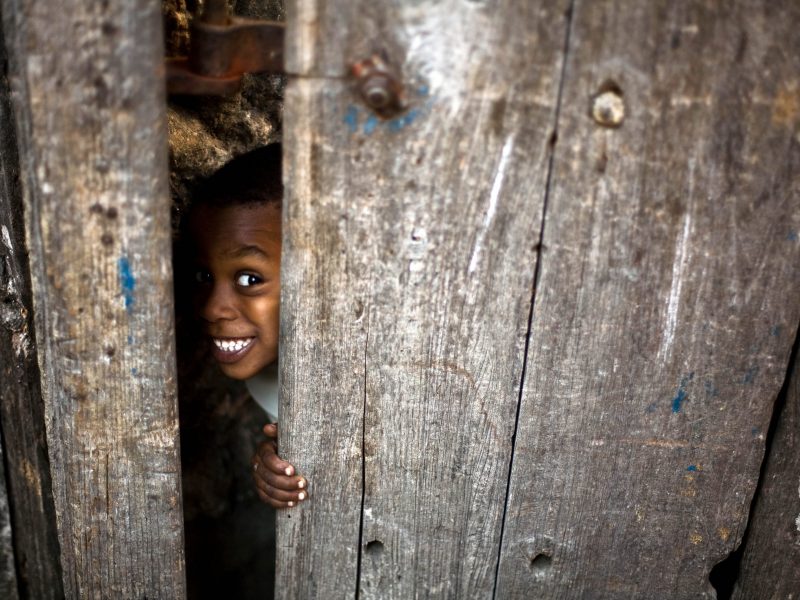
Pınar Tasdemir: In Search of Zen in the Kitchen
Nowadays, you would find some of the best restaurants in Istanbul at the most unexpected spots, hidden deep in the neighborhoods. Araka is one of them run by a chef-owner, who likes experimenting with seasonal ingredients. Chef Pınar Taşdemir talks about her sources of inspiration, Zen in the kitchen and her Istanbul favorites.
The kitchen is like a backstage -weird, hectic, and stressful. Have you been able to find “Zen” in your kitchen?
I have realized right now that the basic principles of a successful kitchen and Zen philosophy are exactly the same! Your life might be a bit chaotic, but there is no space for chaos in the kitchen. Being fast in an unhurried way is vital, and self-discipline is essential to realize that. It’s all teamwork. In a real kitchen, you cannot just say “Me”. The team will be as successful if they can fill in each other’s gaps. You need to serve a dish in a reasonable time, and always with the same standard of quality. This requires mindfulness and getting focused. You don’t have the luxury to be careless. The kitchen is the dimension of my life that I am most satisfied with, where I do entertain most without understanding the passing of time. It’s a place behind the scenes where everything is so real.
Considering my culinary resume so far, Araka’s kitchen is easy as a “piece of cake” actually. I’m at a stage of my life that I need to slow down and spare time for myself. There is a small menu in Araka. We were feeding a maximum of 40-42 people a night before the pandemic. It is a small operation. I am very lucky with my team. It consists of young and well-equipped people with a high energy level. Araka is a bit like family-run restaurants. The kitchen is in tune with the service, and vice versa.
During the pandemic, we were off for about five months, waiting that everything would pass away. The journey of a plate from the kitchen to table in a restaurant is measured in seconds, but I was not ready to serve it in minutes to homes. So, I resisted doing it for a while. Then I realized that takeaway does not have to be as I feared. We had an unexpectedly high demand. We even sent food to remote neighborhoods like Suadiye, Bakırköy and Kilyos! We have mostly been preferred for special occasions or crowded family meals. I feel that we will continue package service even after the pandemic. We have developed a very sweet relationship with our regular clients. Our job does not finish when we send the food package. We also follow up the meal, how it is heated and served at home too.
The physical layout of Araka has also been an advantage during this period. We can host different groups at the same time, as there are three sections: the garden, the ground floor and the upper floor. The new order is still very challenging for us… We are mostly preferred for dinners and it usually takes 3-4 hours to serve a table. Nowadays, though, we send people in about an hour.
Will some habits remain at Istanbul’s dining scene from the pandemic period?
I think home delivery in the food sector has underlined the unique qualities of restaurants during the pandemic period. We understood which restaurants are preferred for their social atmosphere and which ones for their plates.
CERAMIC DESIGN ELEVATING FOOD
How do you surprise people with your plates?
In the past, that was the main thing for me. I thought that I had to surprise people with a plate. Ten years ago, I would experiment with dishes like crazy. I would try an ingredient in several combinations. Of course, this profession has chemistry and some formulas; but I do not try so hard as before. Nowadays, I only search for the flavors that will tickle my own taste buds!
Seasonal ingredients excite me more. I like using ingredients in several different ways during the limited period that I can find them, or I preserve them to use later. I was obsessed with green plums last summer, and I have serious plans of using sakura (cherry blossom) in my plates this year. Recently, we tried to imagine using the quince in ways that we have not tried before. The ingredients change constantly. We focus on blood oranges, for example, and use them in lamb or fish recipes, in desserts, or we infuse them with vinegar and olive oil. That really makes me excited!
How does the plate design affect the meal? Do you have any ceramic artists you work with?
A beautiful plate design could take a very simple presentation to a new level. Sometimes the plate itself is so good that you want to design a special food presentation for that plate. I think we have been very lucky in terms of ceramic artists in recent years. Ferda İrem Kaya designed most of my plates. I found Irem’s work very original, when I first met her. She had not worked with a restaurant before. We made minor changes to her existing designs, so that they can be more ergonomic for the table. I told her about the plates I dreamed of, and she designed them. It turned out so good! We also use white glazed ceramic plates produced by Koray Arıkan from Konya. I like Tulin Bozüyük‘s work as well. At last year’s Design Week Istanbul, there was a food design event where chefs and ceramic artists came together. I had fallen in love with Tülin’s “Pavlova” plates inspired by ballerina tutus! Thanks to their special texture, those plates made even a drop of water look fascinating. I also love the work of Defne Samman. I asked for a shish kebab plate from Defne last year. I am sure that she will design a great plate for us this year! As you can see, last year I was searching for special ceramic plates, while this year, I look for cardboard boxes that could show the food more elegant at package service!
RESTAURANTS TUCKED IN TRANQUIL NEIGHBORHOODS
In the dining and entertainment sectors, we see a tendency to escape from the center to the periphery of Istanbul. This trend has actually started before the pandemic and now it seems to have accelerated. How do you interpret that?
It is great for someone like me, who cares about neighborhood culture. In Boyacıköy, where I live, we make a serious effort not to lose this. In the morning, I love hanging out with my casual home clothing in the coffee shop on my street, or stopping by at the tavern in my neighborhood and walk to my house afterward. Boyacıköy used to have four restaurants and a tavern; unfortunately, they are closed now. I hope we’ll go back to the old times.
For an entrepreneur like me, who chose to open a restaurant on a quiet side-street in Yeniköy, it is very nice to host the residents of the neighborhood as frequenters. That is an inevitable consequence for a growing metropolis like Istanbul. Focusing on popular locations and trying to appeal to everyone does not yield very original results. Besides, I think it is necessary to escape to the periphery in order to avoid the rents that are skyrocketing. I like seeing some acquaintences at the places I hang out or getting to know my guests more closely over time. It is precious for me to prepare breakfast for the same people almost every week on Sunday mornings. My doctor comes to dinner, or my neighbors, and the local grocer İhsan Bro. It reminds me of the lost values…
Now, this trend will increase even more. People have started to back the places they enjoy. During this period, a lot of people have supported us by ordering food at home. We have many high-profile business people among our frequenters as well. Some of them called us and said: “We are here if you need help.” All of this is very dear to me. Although we have been isolated from people, it has been a period during which I have formed deeper relationships.
THE DEFINITION OF ‘LUXURY’ CHANGES
The big shutdown has been an opportunity to pool strength for some of us. We have also seen you on Gain TV with a program called “Sakin” (Calm). What does it offer to the audience?
I didn’t want to enter a studio and do just another cooking program, where I would give and demonstrate recipes. There are many examples of this format already. I wanted to do something else and to be outdoors. Journalist Çınar Oskay has supported me for this project and Gain TV has matched me with the team of Nuve Film and Mustafa Köksalan, as the director. Together, we created even a better format than I had dreamed of. At the first meeting, we decided to make an ASMR type of content. That abbreviation stands for “Autonomous Sensory Meridian Response”. It is also described as a kind of brain orgasm or tickling. There is no speech in the program format. You only hear the sound of cutting wood or the food bubbling or sizzling… The sounds of nature affect the viewer very positively. Rather than giving a recipe, we wanted to present meditative content that could relax the audience for a few minutes, and actually get them closer to an escape plan from the city, which we all dream of. In the new world order, the definition of “luxury” or being “cool” has changed. Shopping, consuming, damaging global resources are not “cool” anymore. We understand the importance of respecting nature more and more, every day. Although the one-day shooting was physically very tiring, I came back home with a completely empty mind. That was exactly what I aimed for the program.
ISTANBUL FAVORITES OF PINAR TAŞDEMİR
What would you put on a table that symbolizes Istanbul?
I would prepare a very colorful menu like Istanbul itself, also including some all-time classics. An Armenian client in Changa* restaurant had given us a topik recipe once, unusually prepared with meat. I would definitely put it on the table. I type of fish caught in the Bosphorus would also be on the menu. I would prepare a dessert with the wisteria liqueur that I made last summer for the first time and adored! It would decorate the table with “Süleymaniye” style candlesticks collected from antique shops and with the flowers of Istanbulensis (a type of indigenious crocus) and judas trees that characterize the city.
Which neighborhood do you belong to?
I am a “satellite-city” girl. We used to call them like this when these clusters of big and smart houses were first built. I spent my childhood in Bahçeşehir, when it was first set up. Of course, Bahçeşehir had nothing to do with what it is now. Even though I liked neighborhood culture and old Istanbul at that age, it was nice to have grown up there. It was ideal for early teenagers. I grew up in a comfortable, fun and safe environment where we could be outside until midnight, with an open-air cinema, pool and all kinds of sports facilities, and our parents were not obsessed with the security of their children. For the last nine years, I have been living in a 120-year-old house in Emirgan and I am very happy about this.
What is the most beautiful thing you have lately seen in Istanbul?
Thanks to my mother and aunt, I have had the chance to explore the old streets and inns of Istanbul from an early age. I still find the streets of the Historical Peninsula full of surprises. There is a blue-walled room on the top floor of Kuveloğlu Han (a historic inn where commercial goods were kept) in Küçükpazar. One of the most beautiful things I have seen in Istanbul is that room. It is rented from time to time. Sipping my tea when it1s empty and spending a few minutes there makes me very happy.
To follow Pınar Taşdemir on Instagram: @pinar_tasdemir ve @araka.istanbul
* Changa was a legendary fine-dining restaurant in Istanbul that operated between 1999 and 2016. The owner chefs have interpreted traditional Turkish food with global culinary techniques and kickstarted “the New Turkish Cuisine”. Many of the prominent Turkish chefs of our day were trained in their kitchen.
 English
English












